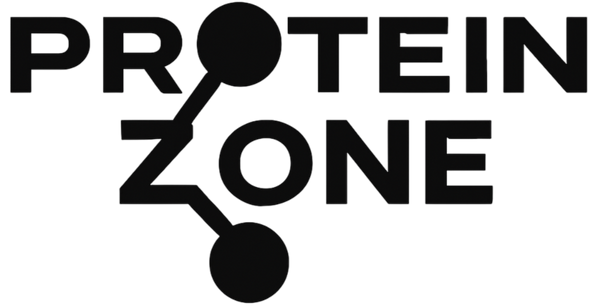Bruh Glow Serum
From ancient botanical infusions to modern biofermented serums, people have always sought ways to calm, hydrate, and renew the skin. Bruh Glow carries this tradition forward with a lightweight formula that blends advanced vitamin science with naturally inspired extracts, delivering daily radiance and barrier support in a smooth, fast-absorbing texture.
At its core, niacinamide (Vitamin B3) refines tone, balances oil, and strengthens the skin barrier, while sodium hyaluronate binds deep hydration into the skin for lasting plumpness and elasticity. Together, these actives reinforce brightness, clarity, and long-term skin health.
To further soothe and protect, bamboo ferment delivers antioxidant minerals and silica that support resilience, while chamomile extract calms irritation and defends against oxidative stress. Panthenol (ProVitamin B5) and allantoin soften and condition, promoting comfort and cellular renewal. Humectants such as glycerin and propanediol draw water into the skin, leaving it refreshed and supple. Functional stabilizers including xanthan gum and polysorbate 20 ensure smooth application, while phenoxyethanol preserves freshness and integrity.
The result is a clean, modern serum that layers effortlessly under moisturizer or sunscreen—hydrating, soothing, and revitalizing the complexion without heaviness.
These statements have not been evaluated by the Food and Drug Administration. This product is not intended to diagnose, treat, cure, or prevent any disease.
Purchase Bruh Glow Serum HERE
DETAILED INGREDIENT LIST
AQUA (PURIFIED WATER)
Introduction & History:
The universal base of skincare, water has been used since antiquity to dissolve, extract, and deliver botanical actives.
Molecular Function & Mechanism:
Acts as a solvent and carrier, distributing active ingredients evenly across the skin surface.
Modern Use & Theory:
Forms the foundation of hydrating serums, ensuring smooth application and absorption.
GLYCERIN
Introduction & History:
Glycerin, a natural humectant, has been used for centuries in both medicine and skincare for its moisture-retaining qualities.
Molecular Function & Mechanism:
Attracts and binds water from the environment into the stratum corneum, keeping skin hydrated.
Modern Use & Theory:
Essential for maintaining soft, plump, and comfortable skin.
NIACINAMIDE (VITAMIN B3)
Introduction & History:
Recognized for decades in dermatology, niacinamide is valued for its versatile skin benefits.
Molecular Function & Mechanism:
Strengthens the skin barrier, reduces transepidermal water loss, regulates oil production, and minimizes uneven tone.
Modern Use & Theory:
Commonly used to refine texture, fade discoloration, and boost radiance.
PROPANEDIOL
Introduction & History:
A plant-derived glycol used in modern formulations for its skin-friendly solvent properties.
Molecular Function & Mechanism:
Enhances ingredient solubility, improves penetration, and provides a silky application feel.
Modern Use & Theory:
Used as a gentle alternative to traditional glycols to boost hydration and formula stability.
SODIUM HYALURONATE
Introduction & History:
The salt form of hyaluronic acid, prized for superior skin penetration.
Molecular Function & Mechanism:
Binds water molecules up to 1,000x its weight, plumping and hydrating deep layers of the skin.
Modern Use & Theory:
Promotes youthful volume, elasticity, and long-lasting hydration.
LACTOBACILLUS/ARUNDINARIA GIGANTEA FERMENT FILTRATE (BAMBOO FERMENT)
Introduction & History:
Fermentation of bamboo extract combines ancient biofermentation techniques with modern skincare science.
Molecular Function & Mechanism:
Rich in antioxidants, minerals, and silica, supporting collagen synthesis and strengthening skin resilience.
Modern Use & Theory:
Helps protect against environmental damage while enhancing skin smoothness and clarity.
CHAMOMILLA RECUTITA (MATRICARIA) FLOWER EXTRACT
Introduction & History:
Chamomile has been used since antiquity to soothe skin and calm irritation.
Molecular Function & Mechanism:
Contains bisabolol and flavonoids that reduce inflammation, redness, and oxidative stress.
Modern Use & Theory:
Applied to calm sensitive skin, even tone, and support barrier health.
ALLANTOIN
Introduction & History:
Derived from comfrey root, allantoin has been used for centuries as a healing botanical.
Molecular Function & Mechanism:
Promotes cellular renewal and softens keratin, increasing skin smoothness.
Modern Use & Theory:
Soothes, protects, and encourages skin regeneration.
PROPYLENE GLYCOL
Introduction & History:
Widely adopted in modern skincare as a humectant and penetration enhancer.
Molecular Function & Mechanism:
Attracts water and improves the solubility of active compounds.
Modern Use & Theory:
Helps deliver hydration and ensures consistent formula performance.
POLYSORBATE 20
Introduction & History:
A mild emulsifier derived from sorbitol, used since the mid-20th century in personal care.
Molecular Function & Mechanism:
Stabilizes formulas by blending oil and water components.
Modern Use & Theory:
Creates smooth, lightweight textures suitable for daily use.
GLYCERYL ACRYLATE/ACRYLIC ACID COPOLYMER
Introduction & History:
A modern cosmetic polymer designed for hydration and texture enhancement.
Molecular Function & Mechanism:
Forms a thin film on the skin that locks in moisture and improves tactile smoothness.
Modern Use & Theory:
Provides long-lasting hydration and a soft finish.
XANTHAN GUM
Introduction & History:
A natural polysaccharide derived from fermentation, used in foods and cosmetics for centuries.
Molecular Function & Mechanism:
Acts as a thickener and stabilizer, ensuring even distribution of actives.
Modern Use & Theory:
Improves product consistency and spreadability.
PHENOXYETHANOL
Introduction & History:
Introduced in the mid-20th century as a safe, broad-spectrum preservative.
Molecular Function & Mechanism:
Prevents microbial contamination, protecting formula integrity.
Modern Use & Theory:
Essential for product safety and longevity.
SODIUM HYDROXIDE
Introduction & History:
An alkaline compound used in small amounts to balance cosmetic pH.
Molecular Function & Mechanism:
Adjusts acidity to ensure formula remains skin-compatible and stable.
Modern Use & Theory:
Maintains gentle pH, supporting skin comfort and active performance.
